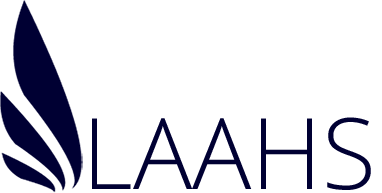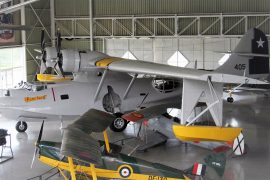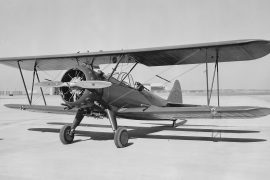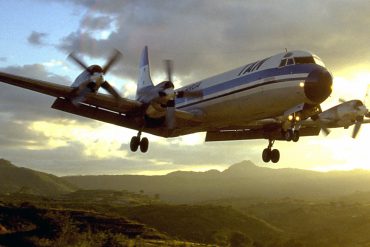Lieutenant Colonel Dell Toedt, born in Laurel, Iowa, in 1930, is a veteran of the Korean War where he flew P-51s with the 45th Tactical Reconnaissance Squadron out of Kimpo Air Base, managing to complete a hundred combat missions before heading back to the United States.
Between 1953 and 1957, Lt. Col. Toedt had the good fortune to do some flying in Latin America, ferrying F-47s, F-51s and T-33s from the U.S. to Ecuador, Peru, Chile, Guatemala and Costa Rica, while assigned to several USAF Ferrying Squadrons. What follows is the first of a series of articles depicting his adventures “down south” where he flew complicated missions, got involved in more than one risky situation and had the time of his life.
The flight from Jamaica to Panama was uneventful, except for my wingman, an old multi-engine pilot with almost zero fighter experience, who kept complaining about low oil pressure readings. Time and again along the flight I told him to forget about it and to concentrate in flying the airplane. Since I was a first lieutenant and he was a captain, when we got to Panama he complained that he shouldn’t be flying my wing, so I was relegated to fly number four in our formation. Fortunately, he wasn’t selected to ferry anything beyond Panama so the issue was moot.
We stayed in Panama for two weeks and spent most of the time flying our Jugs in the local area while waiting for our orders. Some of our fighters were going to be delivered to Quito, Ecuador, some to Lima, Peru, and the rest to Santiago, Chile. I was fortunate to be on the list to fly to all three countries. As expected, some of the other pilots offered me $100 if I would let them fly my airplane to Quito, something that I refused summarily.
By the end of the second week, diplomatic clearances began to be negotiated while some of our Jugs were serviced completely. We were told that if we were forced down in the jungle south of Panama we shouldn’t let anyone get close to us, since there were cannibals in that area. It was a great thought, considering that none of us were carrying a side-arm. Being only a year out of Korea, where we were always fully armed, it was an uneasy feeling; fortunately the Jugs hummed along without a miss.
The flight to Ecuador was a piece of cake. Quito, the capitol, is pretty high in the mountains and the runway was a narrow, gravel strip, but very long. Our true air speed was pretty fast on the approach and it was made more exciting by having several hundred locals standing along both sides of the runway, watching us land. We taxied in, and in no time we were met with a very friendly welcoming party.
The Ecuadorian pilots seemed very excited with their new Jugs, but their main question was: how much gas do they have? It turned out that the Ecuadorian Air Force had no money to buy fuel, and the pilots could only fly the Jugs with what was left in the tanks before being grounded.
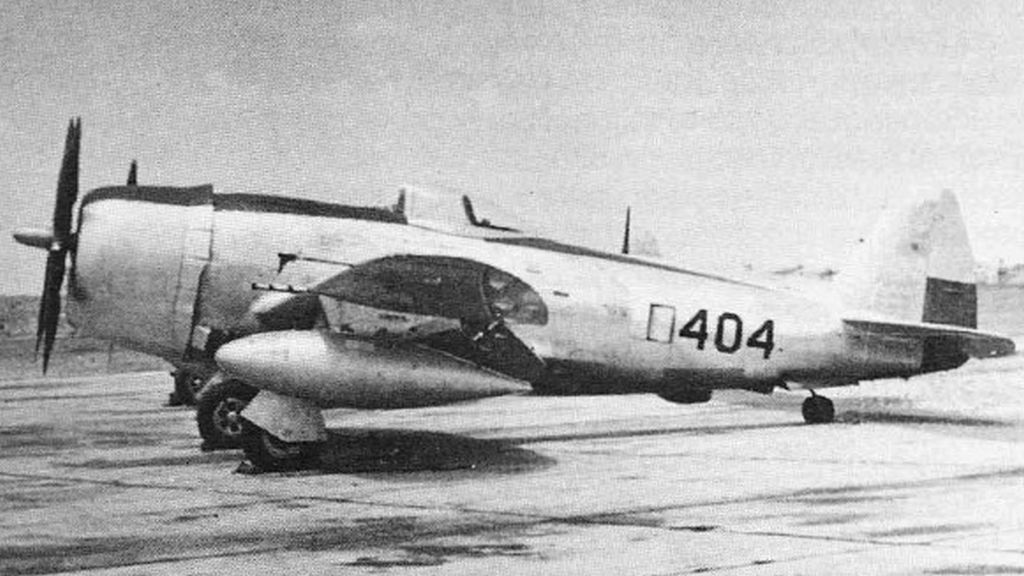
However, the Ecuadorian Air Force’s commandership put on a magnificent dinner for us, with one server for every two pilots, with the U.S. and Ecuadorian pilots mixed up at the tables. We were treated with a superb wine and fresh oysters. We would squeeze lime on them, and since they were still alive, they would shrivel up and then we would eat them. If they didn’t move, it meant they were dead, and we would shout oyster malo! Forcing everybody to down their glasses of wine. Fortunately there weren’t many malo oysters. That dinner was one of the highlights of the entire trip to Ecuador. The Ecuadorian pilots made themselves proud in the hospitality they showed to us, and we really appreciated it.
The next day the people at the USAF Attaché took us around to some of the local tourist sites and one was a rug factory that was run by a woman who had fled communist Europe. They were making beautiful handmade rugs, and one of them was for the United Nations building in New York City. For a few hundred dollars we could have bought rugs worth tens of thousands, but we didn’t have any money!
It was in Quito that I did something that I have always regretted: We were going into the rug factory that I have described, and a small girl, about 8 or 9 years old, was walking up the street with a huge load of firewood on her back. She was so small and so poor, and she stopped for a couple of seconds so I could take her picture. Then she was gone. I have always regretted that I didn’t give her a couple of dollars for that small favor. Every time I look at that picture I feel bad.
After a couple of days, it was time to fly back to Panama to pick up more Jugs for the next delivery to Lima, Peru. We were packed into a USAF’s C-47, and it lined up at the very end of that long, gravel runway in the outskirts of Quito. The pilots went through the pre-take off checklist and seconds later I heard the engines going to max power. I timed the take off roll and it was 43 seconds before we got in the air. The guys flying that overloaded Gooney seemed a lot more confident about getting off the ground than those of us in the back. Minutes later we were on our way to Albrook Air Force Station in the Panama Canal Zone.
Albrook was a great place to be stuck. The commander, Colonel Wasche, was a good friend of our wing commander, Colonel Tarlton Watkins. “Teeter” Wasche, Colonel Wasche’s wife, organized some tours for us, and even drove us around in her little Morgan sport car.
Since the weather was always nice early in the day, we would fly our P-47s for an hour or two during the morning. Then, after landing, we would have lunch and had the rest of the day off. Usually, during the afternoon we would take a short nap and then we would go to the Club for cocktails. The end of the day invariably was marked by dinner. It surely was a though life!
But whether you believe it or not, we were a bit anxious to get the planes delivered so we could go home. For all the laughing and joking, this was a hard nosed bunch of professional fighter pilots who felt that we were being held up by a bunch of administrative barriers, and we wanted to get on the road. The powers that be did not seem to have our same sense of urgency.
One fine day we finally got moving. During the flight to Lima I was number two of the group led by Captain Bob Monteverdi. My buddy Rusty Wilson was number three, and I can’t quite recall who number four was. Interesting to note was the fact that I had Montezuma’s Revenge and had put two large packs of paper towels in the cockpit with me, just in case. I didn’t tell this to anyone, for I didn’t want to stay behind and miss the opportunity to fly down south once again. Around the afternoon we landed at what I remember was Talara, Peru, where we refueled before continuing to Lima.
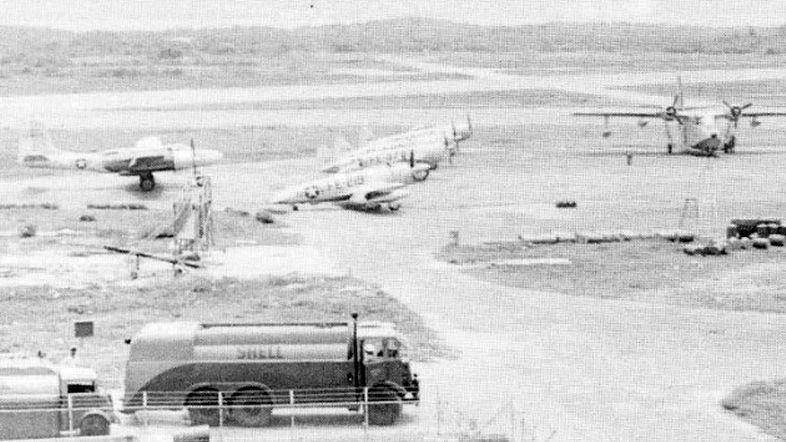
During the take off from Talara, I was on the downwind side of Bob Monteverdi, and there was about a 40-knot crosswind from the left. I rolled a few seconds after Bob, and as the gear came up, I was caught in his prop wash and the crosswind. The nose of that big P-47 pitched up, the left wing came up and the right wing went down, in a word, the Jug rolled upside down in a matter of seconds. I jammed full forward stick into the left corner to get the wings level and the left wing down, and put in full right rudder to help the roll. The big Jug was turning right with the right wing coming up from the full uncoordinated controls I had in, but finally rolled over, nose high at 90 degrees to the runway.
I had the old Air Force yellow flying gloves; those gloves jammed the stick full forward, and I pushed that 2000 HP engine through the throttle stop to try to get max power and dove straight into the cut bank where the runway had been. Then I passed a small hill, diving, full throttle into that bank and repeating to myself now or never! The yellow gloves pulled back on the stick, the nose came up and the Jug just cleared that big bank and smashed down the far side of the runway, on the edge of a stall. It was a swamp-like area with a lot of tall grass. The Jug went through that grass, picking up speed and quickly staggered out of it.
My friend, Rusty Wilson, who was rolling behind me, had clamped down on the mike and was going ah ha ha ha! The guys on the ground watched me go down behind that small mound of dirt, then into the tall grass on the far side. They said they were waiting for the big, black cloud of smoke from the crash (Remember that our P-47s had half full drop tanks installed) but to their surprise, my Jug came staggering up out of it in a matter of seconds. Minutes later we circled the field, joined up in formation, made a low pass across the airport and finally headed south, to Lima. There was overcast, about 2000 feet thick, and Monteverdi began a slow climb through it to get on top. At least now we were on our way.
Upon arriving in Lima the weather was a mess: Thunderstorms, low ceilings and poor visibility. Monteverdi did a superb job finding the airport and lining us up to the runway, and we all four pitched over the field to land.
As mentioned earlier, I was flying two in the formation, however as I pitched to land I ran into a rain cloud, so I pulled a little tighter, and when I broke clear at about 600 feet, I was leading the flight. Somehow I had passed everyone in the cloud! A couple of guys landed on cross-runways, and it was a barrel of laughs with Jugs criss-crossing on landing, but it was the best we could do. In the end, we all landed safely. The airport at Lima was nice. After dismounting we were taken to an excellent hotel. There we had a couple of pisco sours, and went to bed. It surely had been a tough day.
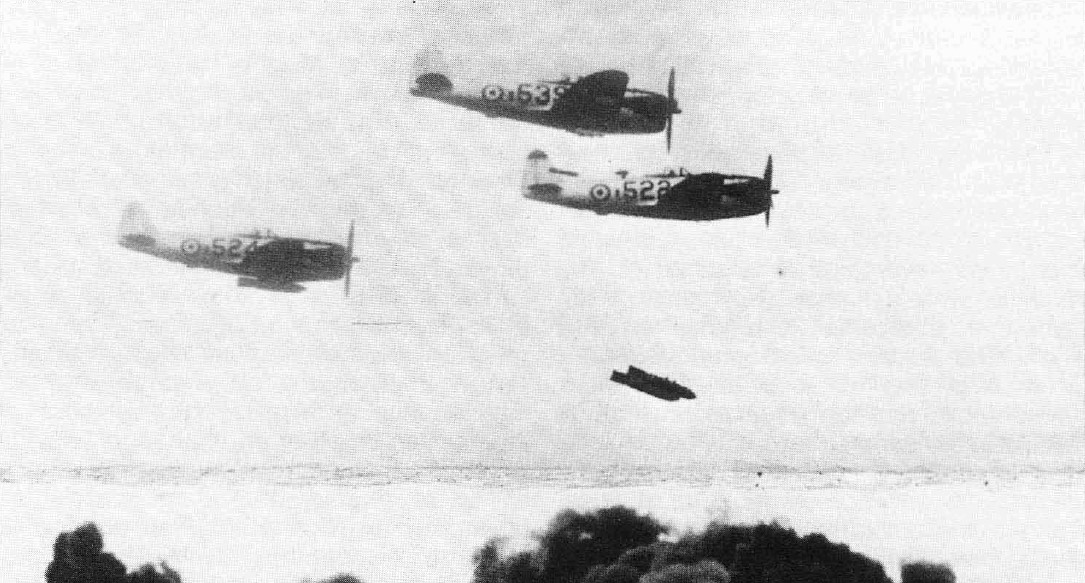
Lima is a beautiful city and the ladies at the USAF Mission took us to some of the local sites and to some of the best shopping places. Unfortunately, none of us had any money. They showed us silver that was fit for an embassy and that was a thousand dollars, but would have been worth 10 times that in the U.S. We did buy some vicuña rugs that were probably on the black market. I was going to make one into a coat for my bride to be.
During the trip back to Panama we were on a Peruvian airline that, as a matter of pride, served pisco sours. We all had several of them during the flight. Upon arriving in Panama the weather was sweltering and we were most uncomfortable thanks to the winter blue uniforms that we were ordered to wear during our time in Lima. I remember that as one of the most uncomfortable episodes of the entire trip. And to make things worse, the customs’ guys at the airport didn’t seem to be in any hurry. But at least we were back and ready to take another trip south to deliver more Jugs.
After arriving back at Albrook we began to plan our next flight, this time to Chile. It was going to be the largest group to be delivered: 16 planes. The flight was going to be lead by Bill Redeen and I was going to be his wingman, flying as number two once again.
But while the day of our departure arrived, we quickly resumed our old routine. Eventually we would go to the Embassy and get a partial pay, but it was always a mere pittance, so we were always broke. It is hard to believe it now, but during this entire trip we hadn’t had a paycheck! At least the mail call was a highlight of the day, as I would get several letters from my wife-to be, Gloria.
Our trip to Santiago was fairly uneventful, except at Antofagasta, Chile. We landed at a dusty, windy airport located in one of the driest spots on the planet. To make it more complicated, all of the electricity was off in the entire area, so as we checked in to the local hotel we had to fumble our way to our rooms without lights. Fortunately most of us carried flashlights! It was dark when we got there and dark when we left the hotel, so we didn’t see much of the city. It was good to get out to the airport and start South again.
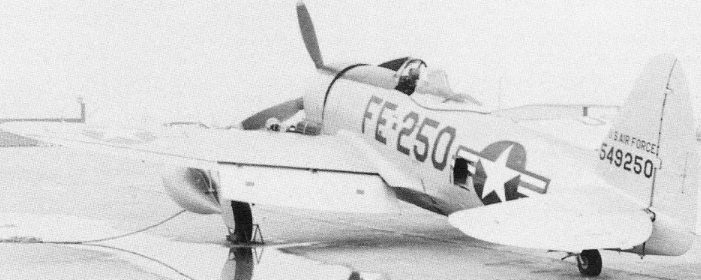
The memories of this last leg of the flight are hazy for me. However, I do remember that someone told us that we were supposed to wear Class A uniforms because there was going to be a formal reception for us upon arriving in Santiago. In contrast, we were dirty, had no clean clothes, and were lucky to have something to fly in. As expected, we looked like the raggle taggle gypsies as we climbed out of our P-47s in Santiago, but the Chileans didn’t bat an eye. They welcomed us like long lost friends and had a most impressive ceremony where they presented us with the red wings that denote a War Pilot (ordinary pilots get blue wings.)
The ceremony was plenty of speeches and some exceptional Chilean champagne. At some point we were all lined up to have our War Pilot wings presented by the Chilean Air Force Commander. He was small and appeared to be about 80 years old. The Chilean wings are very distinguished looking wings with a large pin, about 2 inches long, that fastened it to the shirt of the pilot. One of our guys, named Bruce (I can’t remember his last name), who was about 6 feet 2 inches tall, was being presented his wings by the commander, who sort of stumbled and drove the long needle into Bruce’s chest. Bruce stood at attention, and didn’t flinch, while we kind of snickered. In the end, the long needle was pulled out and the ceremony proceeded.
We spent a few days in one of the finest hotels in Santiago, and were privileged to attend the changing of the guard at the La Moneda Palace. It was very impressive. On the other hand, the food in the hotel was excellent, and the wine was magnificent. The Chileans were very friendly and we had a really pleasant time while we were waiting for an aircraft to pick us up.
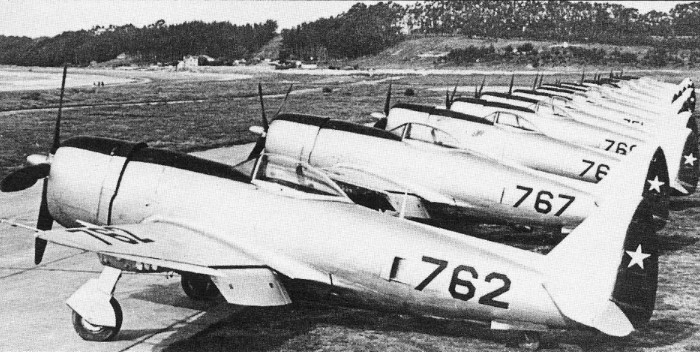
When our C-54 finally arrived, I was the first aboard. That old plane had a bunk behind the radio compartment and I dove right into it. I took a long nap while we were on our way to Lima, which was the first leg of our flight back to Panama.
We spent the night in Lima, where some of the pilots –who had a bit of money- went down town to a local hotel. The rest of us, being broke as usual, stayed in the airport overnight. Rusty and I only had a few cents, so for supper we had a bowl of onion soup, with an egg in it. Cost was 89 cents. Later, we sat in the airport until late in the evening, watching the crowd thinning out. The terminal had beautiful long drapes that hung along the wall. We slipped in behind them and slept on the floor until morning.
When we got to Panama, we were able to get a partial pay from the U.S. Embassy, so we had some money again. Several of us invested it in several cases of good South American wine, and marked them as aircraft Parts to get through customs back in the U.S. Days later we landed at San Antonio International Airport, cleared a perfunctory customs check, and flew over to Kelly AFB to wind up the trip where it had started two and a half months before.
These notes, originally published in December 2005, comprise the second delivery of a three-part series of articles. Lt. Col. Dell Toedt, who passed away on 21 November 2009, is fondly remembered, and in tribute to his memory, we are finally making these notes available to the public once again. You can read part 1 by clicking here, and part 3 here.
